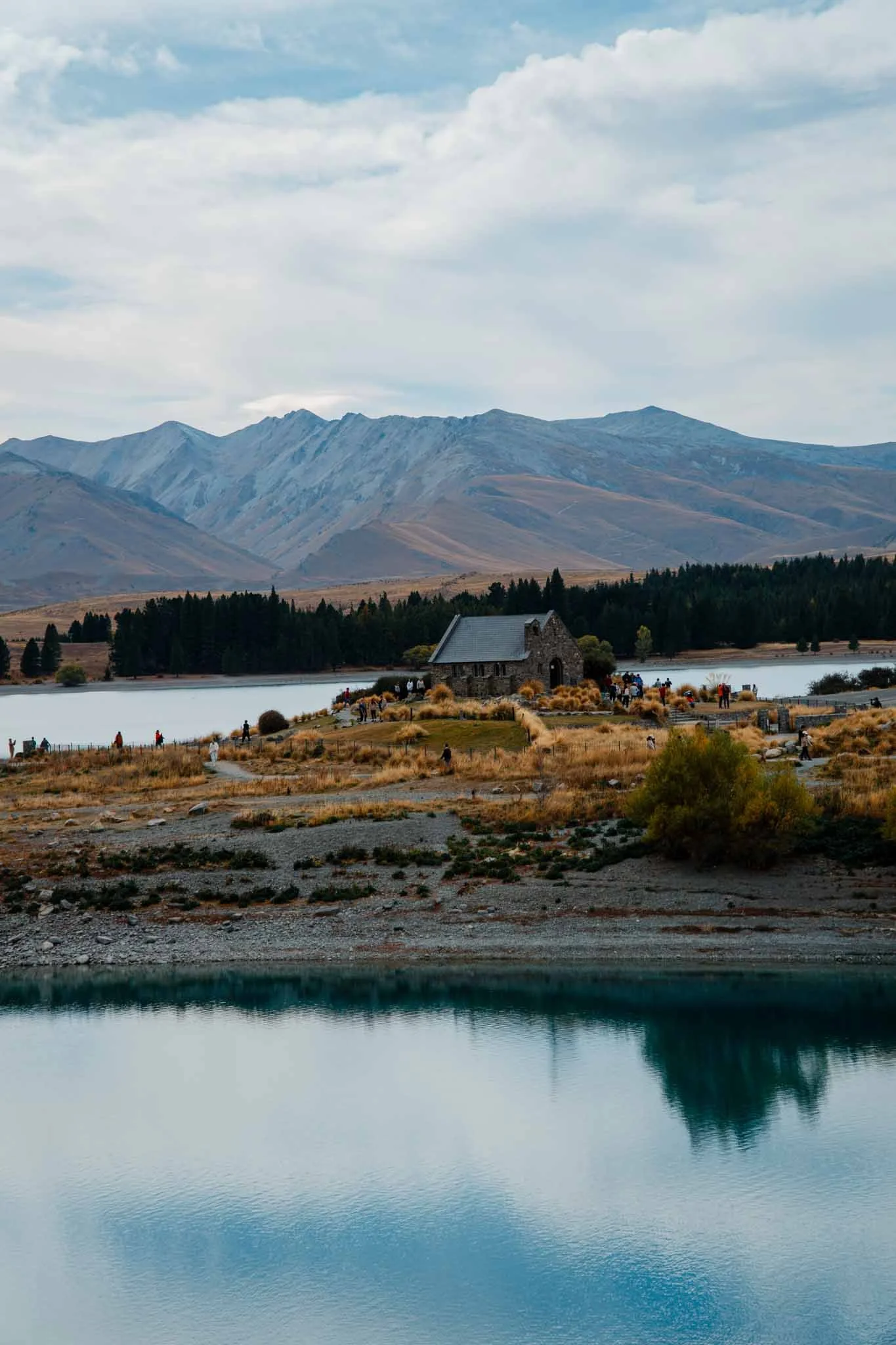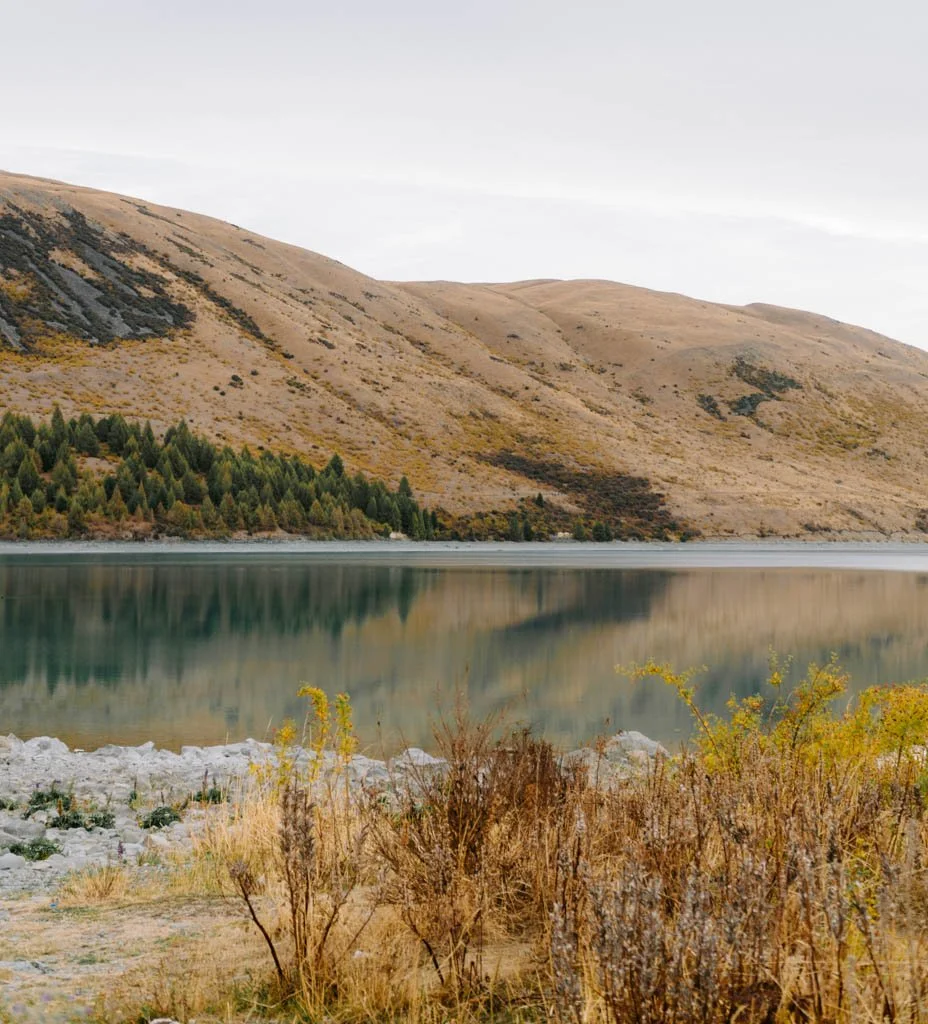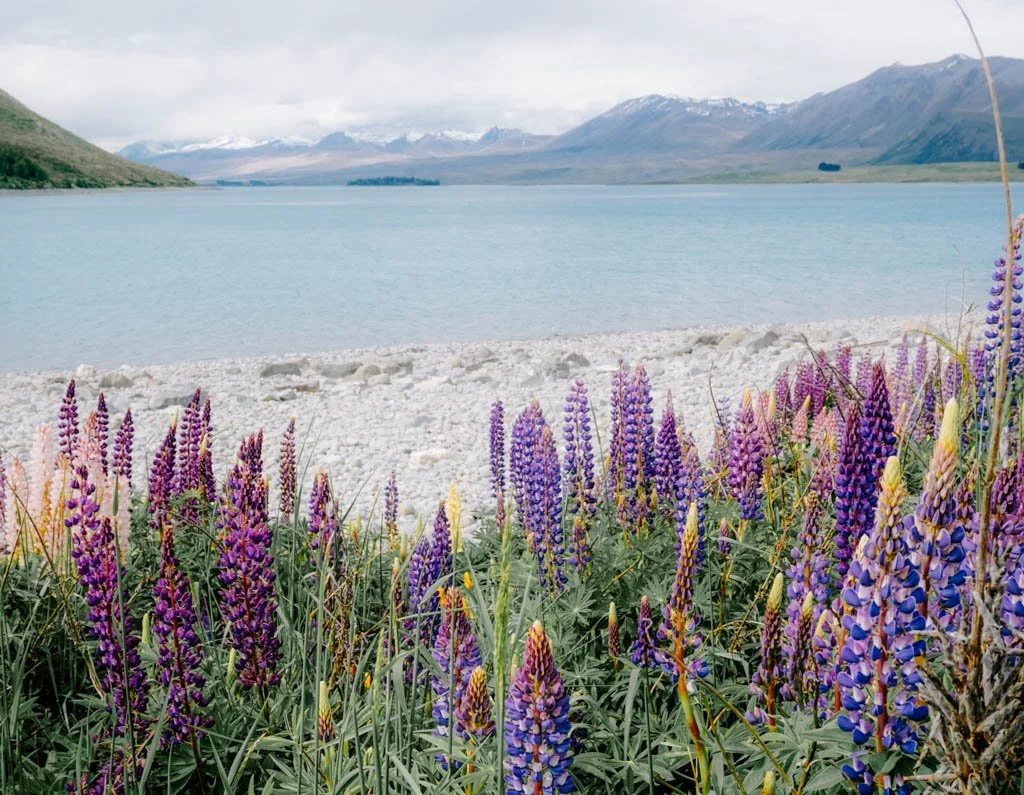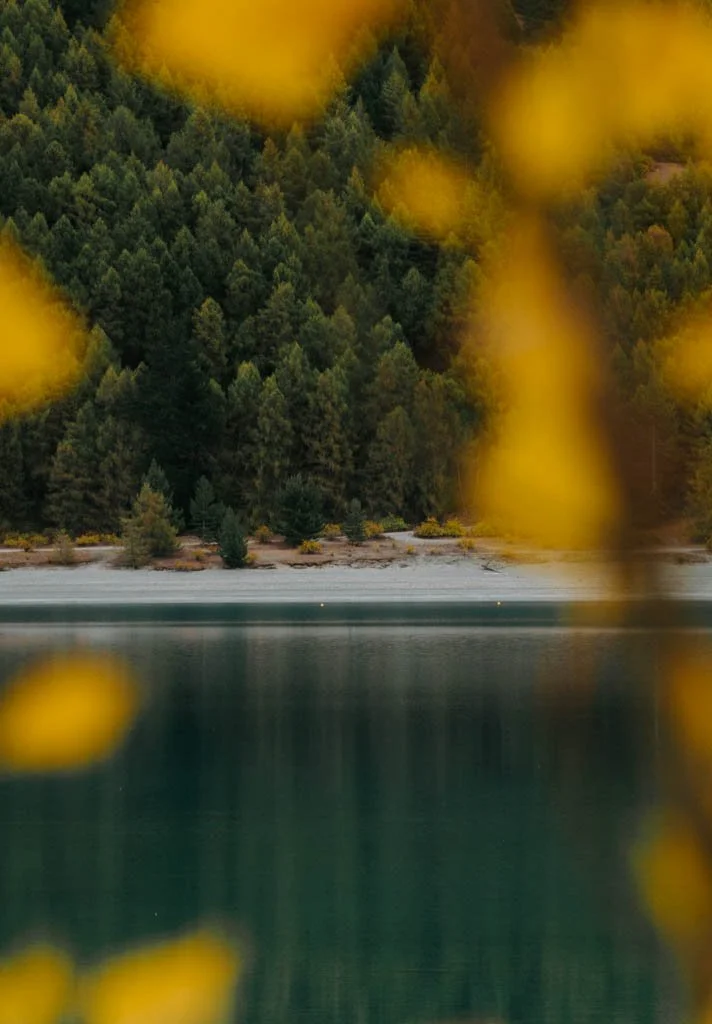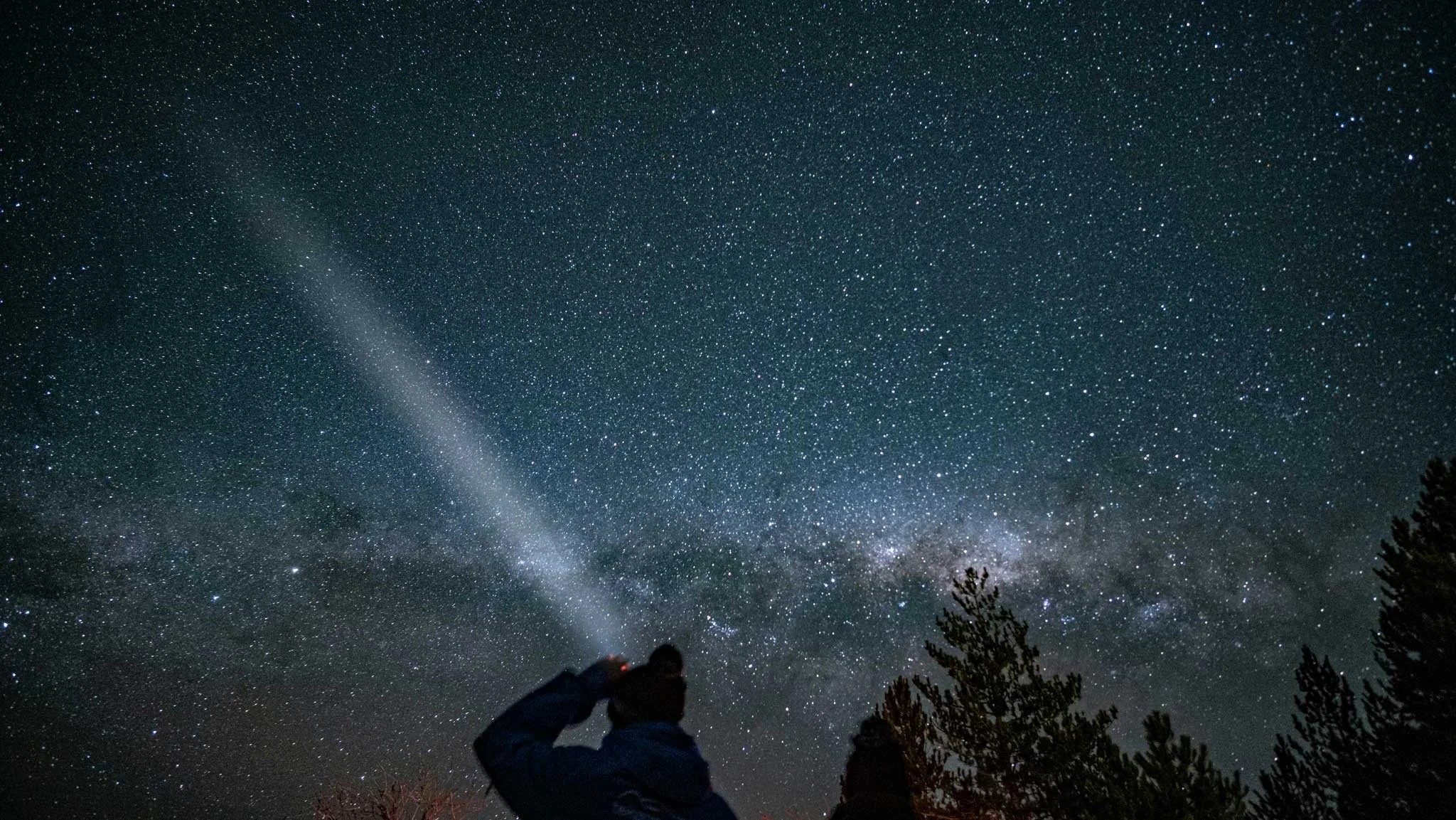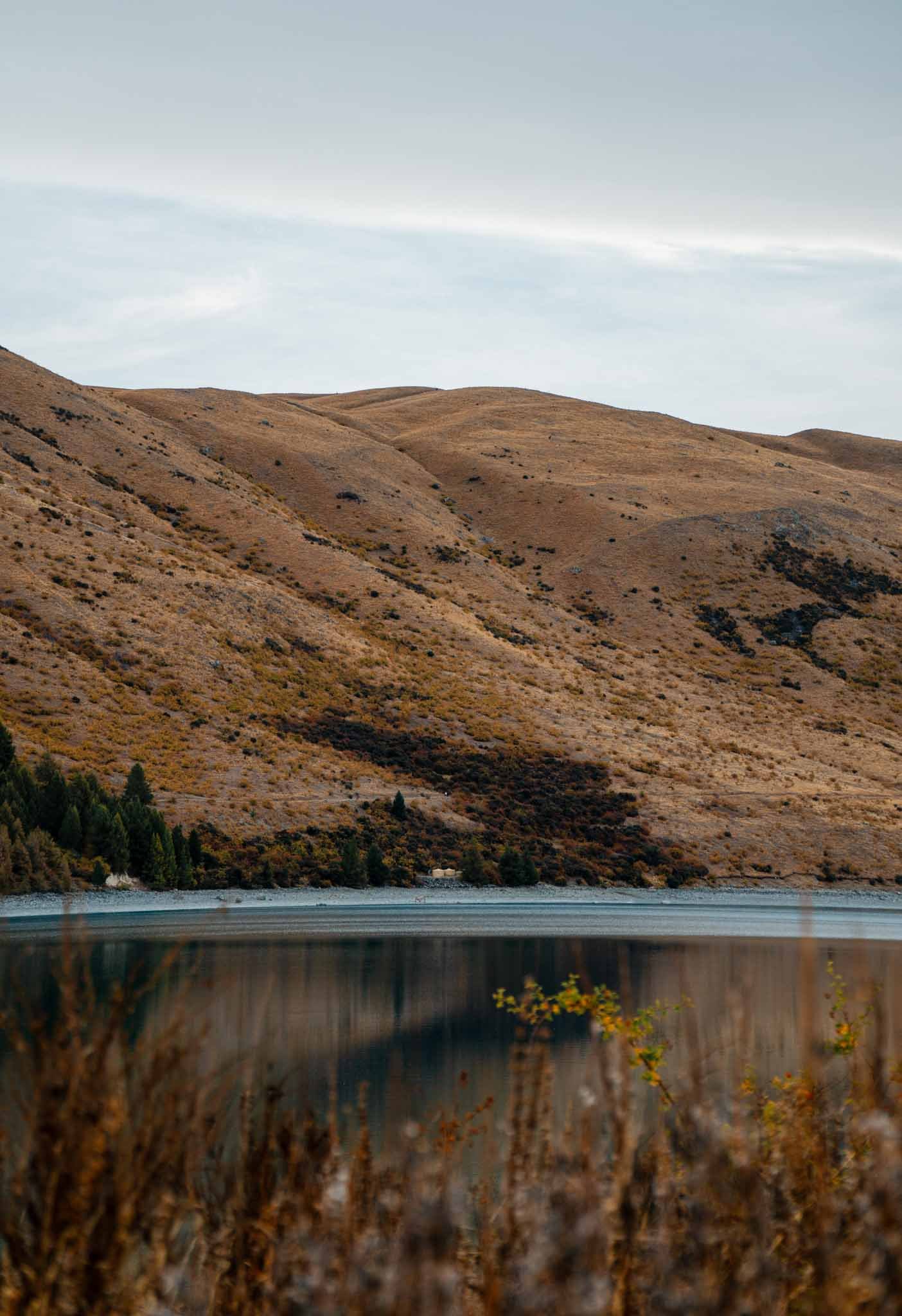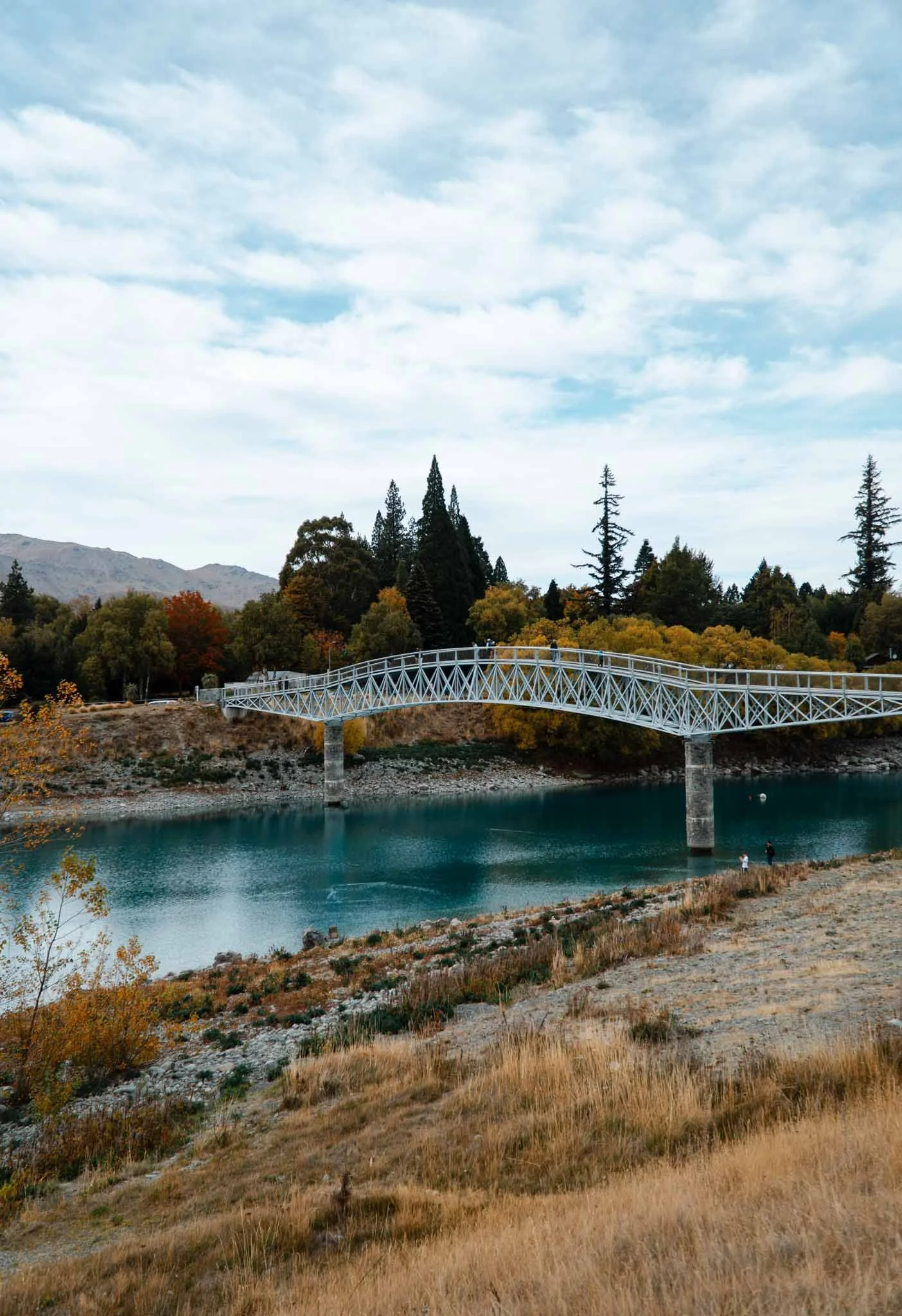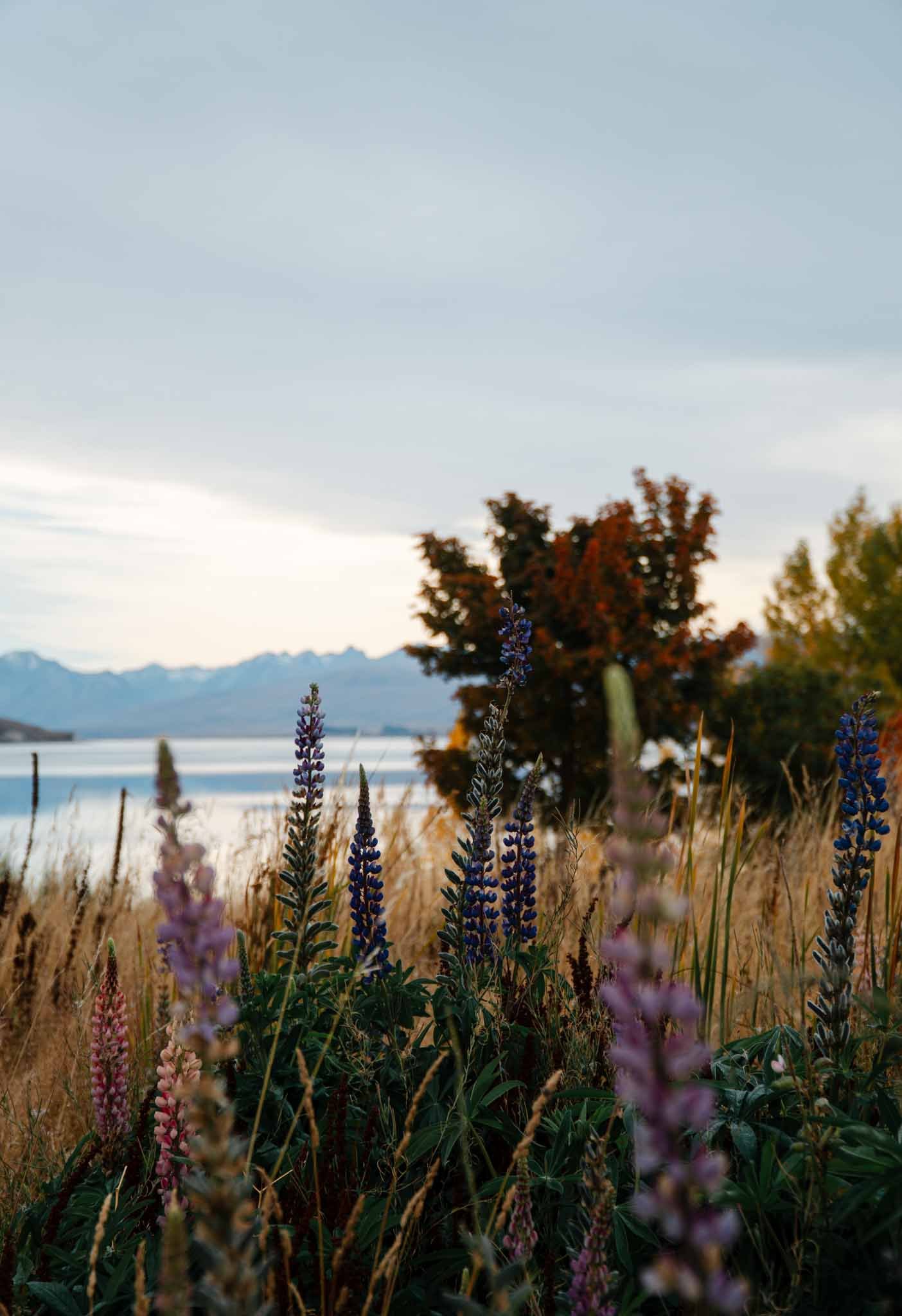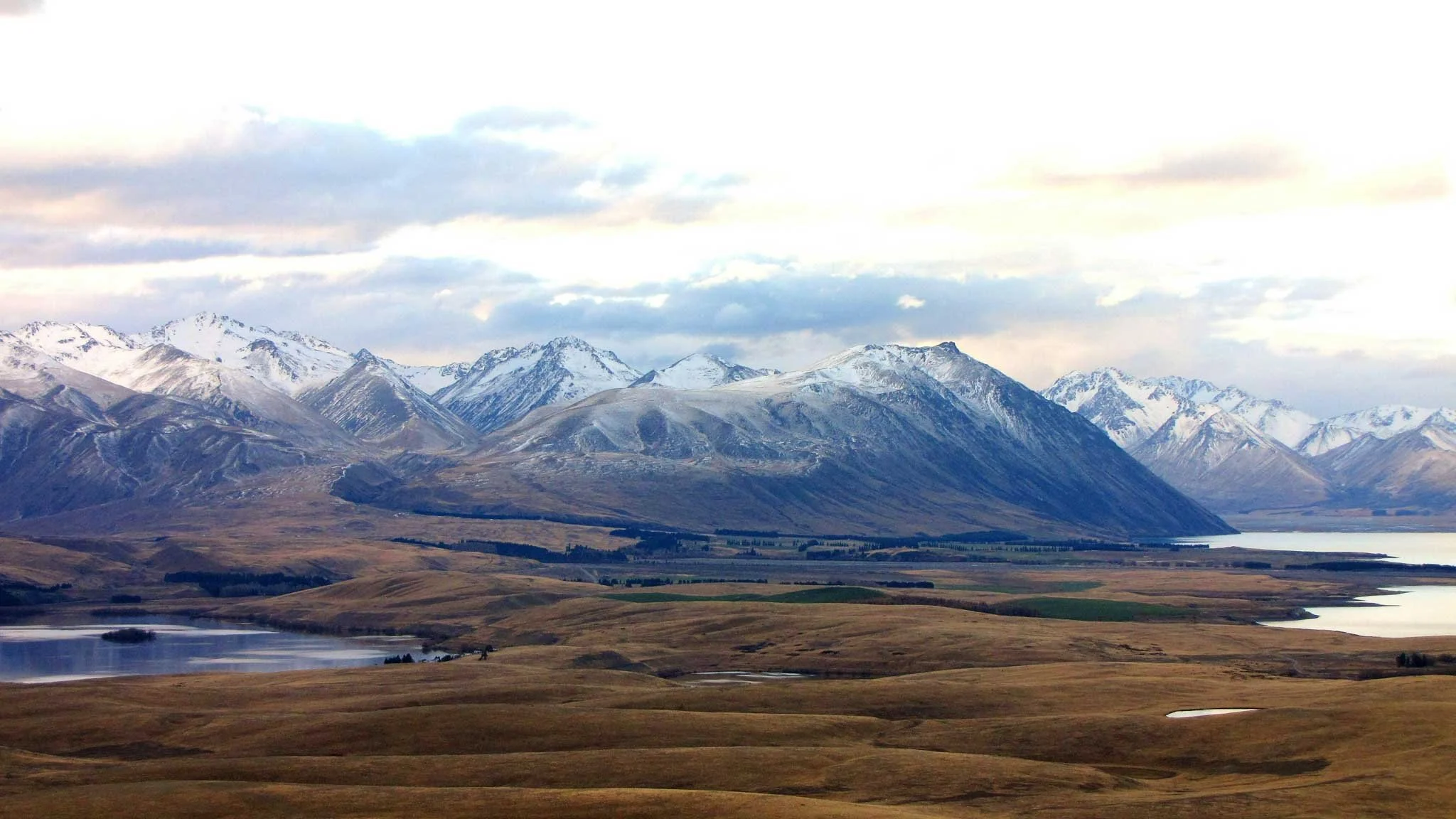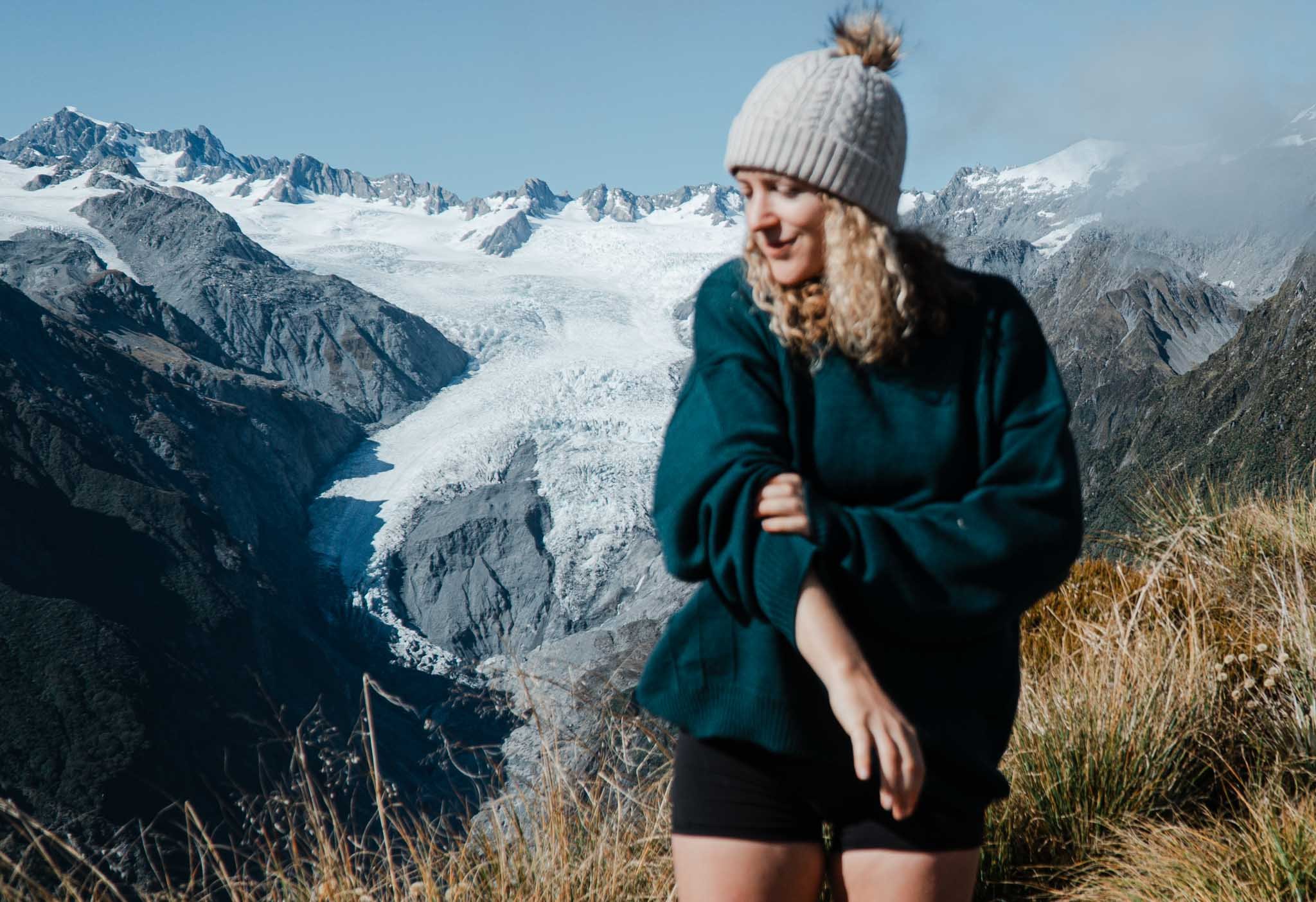What to do around Lake Tekapo, the South Island's vivid blue lake
Lake Tekapo is a classic stop on a South Island road trip; here’s my guide to the small lakeside town
The Church of the Good Shepherd
On any South Island road trip, you’re likely to pass through Tekapo.
The small town, and the deep blue lake of the same name, sits right on the highway between Christchurch and Queenstown.
As one of the few towns in the vast and sparsely populated Mackenzie Region, Tekapo is a tourist hub almost by default. For such a small town — population around 600 — there are a surprising number of hotels.
It feels like a teenage village, too young to have any real personality and struggling with the growing pains of trying to cope with so many more visitors than residents.
The lakefront in the town itself is nice, but somehow feels like a wasted opportunity to me, a scraggly mess of weeds and rocks where there could be walking trails and some form of landscaping.
Granted, some of those weeds, the famous lupins, lure in visitors from all over the place. The first time I went to Tekapo was to see the lupins.
In photos online, there appears to be fields of them. In Tekapo, I found a few clumps around the lakefront.
Later I learned the lupins are invasive anyway, and locals despise them for the way they take hold of the landscapes. All those floaty influencer shots hide the fact the flowers are strangling our rivers, causing flooding and erosion, and displacing our own fragile native plants.
Tekapo village itself is half carpark, in true New Zealand style — we love our cars — and somewhat bland. You’ll find places to eat here, but nothing remarkable (in my eyes). Maybe I’m demanding too much of a very small town in the middle of nowhere, but the honest truth is, while the area around Tekapo is very pretty, it’s far from my favourite place in the South Island.
I’ve visited Tekapo many times on road trips around the South Island. It’s pretty — but (controversially?) I think it only deserves a quick stop.
Lake Tekapo at a glance
GETTING THERE
Located almost exactly halfway between Christchurch and Queenstown, Lake Tekapo is the perfect stopover on a road trip through the heart of the South Island.
It’s also roughly 90 minutes from Aoraki/Mount Cook National Park, so it’s a good base for day trips if all the accommodation in the park is booked.
HIGHLIGHTS
Unless you’re using Lake Tekapo as a base for visiting Aoraki/Mount Cook, I think the town only needs one night.
In 24 hours or less, you can check off the must-do activities in Tekapo:
Stroll around the lakefront and see the Church of the Good Shepherd
Go stargazing at night, either wing it or check out Chameleon Stargazing to understand the night sky in more depth.
Visit the Astro Cafe at the Mt John Observatory for coffee, views, and walks
WHEN TO GO
The most popular time to visit Lake Tekapo is from late spring (November) to early autumn (March). During these months, the weather is warmest and the famous lupins are blooming around the lake.
However, Tekapo is also beautiful in winter, when snow dusts the mountains and lakeshore. The winter months (June to September) also offer clearer, darker skies for stargazing.
WHERE TO STAY
Being small, Tekapo is fairly expensive when it comes to accommodation, especially if the town is just a stopover.
I have stayed in the budget-friendly Tailor Made Tekapo and enjoyed it; it’s a sweet little place with a pretty garden.
Star gazing is the best thing to do in Lake Tekapo
Choose from cheap(er) and cheerful with Chameleon Stargazing or go for the full observatory experience with the Dark Sky Project
Tekapo is special thanks to its location in the middle of the Aoraki/Mackenzie Dark Sky Reserve.
The Mackenzie region has some of the clearest, most spectacular night skies in the world. This dark sky reserve was the third to be recognised in the world and is the dark sky largest reserve in the Southern Hemisphere.
The night sky in Lake Tekapo is exceptionally clear, with very little light pollution. If you’re very lucky, you might even get to see the Southern Lights from Tekapo.
You can go stargazing in Tekapo by simply heading to the lake shore at night (rug up warm!) and staring up at the sky. On moonless, clear nights you can see the vast sweep of the Milky Way.
However, if you are really interested in astronomy, you’ll get a lot more out of a tour.
Telescopes on tours can help you see many more deep sky objects than you can by star gazing by yourself without a powerful telescope.
For a curated experience, you can visit the observatory located on the mountain rising next to the lake. Nowhere offers a better view of the night sky than the summit of Mount John, reached by a 15 minute drive from Tekapo town.
At 1,029 metres high, Mount John offers 360-degree views which are just as impressive at night time as they are during the day.
The Dark Sky Project offers a star gazing experience from the Mount John observatory, guided by astronomy experts. You’ll see the night sky in a new light, with stories drawn from Maori astronomy illuminating the Southern skies.
Using the telescopes in the observatory, you’ll be able to see the Milky Way, planets, star clusters, and even galaxies.
A more budget-friendly option for stargazing in Tekapo is to go with Chameleon Stargazing. Their tours start from $65 per person, with a 90 minute tour that includes hot chocolate, marshmallows, and photos of you with the night sky.
Chameleon’s whole focus is on having a small, personalised experience, so it’s also a great option if you like friendly customer experience.
If stargazing is one of the top things you want to do in Tekapo, I recommend staying at least two nights, in case of bad weather. If the clouds close in, you might need to move your stargazing tour to the following night.
The Aoraki Mackenzie International Dark Sky Reserve is supported by huge efforts from the community. There are lighting ordinances across the district to help protect the pristine night skies, including initiatives like dark sky friendly street lamps — this is the only region in New Zealand to have warm, amber streetlights.
One fact I love about the reserve is that the lack of light pollution allows insects and other creatures to thrive. (I wrote about this in more detail for Atlas Obscura, if you’re interested).
This means that supporting the reserve is in a way a form of eco-tourism — all living things benefit from less light pollution, including humans. See if you notice a better night’s sleep in the pitch black of the reserve!
The first thing you will want to do in Lake Tekapo is enjoy the beautiful scenery
The lakefront is rocky and somewhat covered in weeds, but the water is stunning
When you first get to Tekapo, the first thing you’ll do is walk around the lakefront to admire the colour of the water.
The Maclaren Footbridge (see it on Google Maps here) gives you a good vantage point, as does Pines Beach in Lake Tekapo Regional Park.
The footbridge is a pretty photo spot
It takes around 30 minutes to walk from the bridge, to the Church of the Good Shepherd, to Pines Beach.
The lake looks stunning in any weather, so no need to worry about the forecast. On more overcast days, though, the surface of the lake can look more silver than blue.
The light on the lake and the mountains changes throughout the day, so it’s worth waking up early for sunrise or sticking around for the sunset.
On calm days, the lake is a perfect mirror
And if you can’t resist the temptation of the blue water, go ahead and jump in — it’s safe to swim in Lake Tekapo.
If you have kids, check out the playground on the waterfront. There’s an epic looking flying fox there that looks right out at the lake — I was tempted to have a go myself.
Taking a few photos of the Church of the Good Shepherd is a must-do activity in Tekapo.
It’s a bit cheesy and underwhelming — most of the photos you see are artfully angled so you can’t see the town in the background or the many people strolling around the tiny church.
But even so, it’s a pretty photo spot and you’ll walk past it anyway if you’re exploring the lakefront.
The best time to go is early in the morning — sunrises at Lake Tekapo can be epic — or later in the evening. If you’re into astrophotography, it’s also a great place for taking photos after dark.
Spot lupins along the lakefront
I found these flowers on the edge of a parking lot and loved the contrast with fall colours.
I have a somewhat embarrassing confession to make.
The first time I visited Lake Tekapo was to see the lupins flowering.
It’s a long way to go from Auckland to see patches of weeds. Regardless, the lupins are pretty, and a main draw in Tekapo.
If you’re visiting Tekapo in spring or early summer — between November and early January — you can see the lupins flowering.
They grow around the lakefront near town, so you’ll see them easily, although they aren’t the lush flower fields most photos would have you believe. They grow in clumps and often it’s some clever camera placement making them look a lot more dense.
The lake colour also contrasts with the purple lupin flowers.
There is also a lupin field on the outskirts of town, where you can take some great photos — see the location on Google maps here.
These flowers are a little controversial. They are a noxious weed and the Department of Conservation (DOC) are working to eradicate them. This means you don’t need to worry about trampling all over them to get your shot.
Head up to the Mount John Observatory for coffee, cake, and a view
The view from Mt John Summit
During the day, the Mount John Observatory provides an excellent view of Lake Tekapo. The observatory is only a 15-minute drive from Tekapo town.
Note that there is an $8 entry fee per vehicle to drive up to the observatory.
The Astro Cafe at the observatory is a great spot to go for morning or afternoon tea.
Get yourself a drink and a snack and admire the sweeping views of Lake Tekapo below.
You can also walk from the cafe along trails crisscrossing the golden hillside, which is a nice way to get some steps in if you don’t fancy hiking up the Mount John Walkway.
If driving up to the observatory feels like cheating (or you just don’t want to pay the entry fee) the Tekapo Mount John Walkway makes a great half day hike.
The 9 kilometre loop takes around 3 hours - definitely long enough to deserve a treat from the Astro Cafe at the top.
Starting from the lakeshore, just past Tekapo Springs, the trail climbs through forest until it reaches the Mount John Observatory and lookout point. You walk back down the same way.
Visiting Aoraki/Mount Cook from Lake Tekapo
I wouldn’t really class visiting Aoraki/Mount Cook National Park as an activity to do in Tekapo — it takes around 1 hour and 15 minutes to drive to Mount Cook from Tekapo — but you might see a lot of suggestions that this is the case.
That’s because finding accommodation in Mount Cook Village can be exceptionally difficult, and when rooms are available they are often very expensive.
Tekapo and Twizel are the only sizeable towns within striking distance of Aoraki/Mount Cook, so it is entirely feasible to stay in Tekapo and visit as a day trip.
Stop by Petronella’s, one of the best little independent bookstores in the country
Petronella’s Bookstore is a real little gem in Tekapo. The shop won Aotearoa Bookshop of the year in 2024, for good reason.
Locally owned and run with love, the bookstore has a great selection of books. It’s worth dropping in on your way down the main street of Tekapo, to maybe pick up your next holiday read from a New Zealand author — maybe a copy of Ruth Shaw’s The Bookseller at the end of the World, or Eleanor Catton’s Birnam Wood.
Books make great souvenirs, in my opinion, and it’s always nice to support little local businesses like this one.
The store also has a few small gifts and homewares to browse, so you never know what you might find to take away with you.
Where to eat in Tekapo
For breakfast or lunch, The Greedy Cow Cafe is your best option in Tekapo.
I stopped by and grabbed a pie for lunch and scoffed it in minutes.
The cabinet is packed with classic New Zealand foods (pies, rolls, all the goodies) and the coffee is much better than what you would normally expect in a small town.
If you haven’t already tried a flat white, you should give it a go — it’s one of the most iconic drinks to try while in New Zealand.
As well as the Astro Cafe and the Greedy Cow Cafe, one of the best places to eat in Tekapo is the Blue Lake Eatery & Bar.
This is a great spot for dinner, with a menu that features local produce and a range of homemade breads and sauces.
Blue Lake is also home to one of New Zealand's smallest breweries, Burkes Brewing Co, which produces unique beers from quality ingredients.
If you’re travelling on a budget, a word of warning; Tekapo is an expensive place to eat. Even the local Four Square supermarket seemed a lot more expensive than usual (it’s the same at the Fresh Choice in Te Anau — these supermarkets can charge more because they are in remote, but popular, locations).
So stock up on groceries in Queenstown or Christchurch (Pak’n Save is the cheapest).
South Island itineraries that stop by Lake Tekapo
The easiest way to get to Tekapo is by driving in your own vehicle. It’s a three hour drive from both Christchurch and Queenstown.
Driving in either direction is a scenic and stunning trip, with plenty of places to stop along the way, so it will likely take you a lot longer than just three hours — I would schedule a whole day to get from either Christchurch or Queenstown to Tekapo.
Check out these itineraries to help plan your trip:
Thanks for reading this far!
I hope these recommendations on what to do in Tekapo were helpful in planning your trip.
You might also enjoy these posts:
AUTHOR BIO
I’m a freelance travel writer from New Zealand with bylines in National Geographic Travel, Conde Nast Traveler, Travel + Leisure and more.
I’ve travelled up and down beautiful Aotearoa and I love sharing my recommendations for the best places to visit in New Zealand.
